Topic 8
1/29
There's no tags or description
Looks like no tags are added yet.
Name | Mastery | Learn | Test | Matching | Spaced |
|---|
No study sessions yet.
30 Terms
What are the 5 steps of parturition
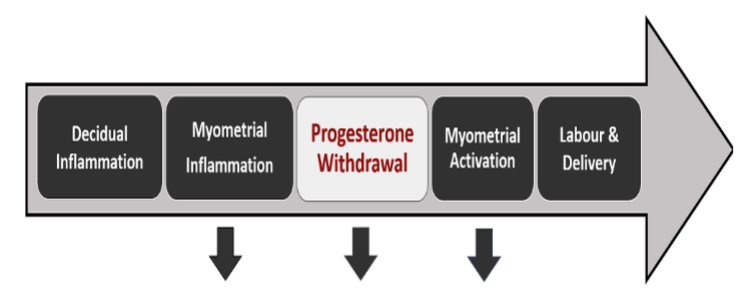
What causes Decidual and Myometrial Inflammation
Infiltration of leukocytes (Monocytes, granulocytes, lymphocytes) into reproductive tissues e.g. cervix, decidua, myometrium and fetal membranes prior to and during human labour
What initiates Decidual and Myometrial Inflammation
the upregulation of pro-inflammatory cytokine and chemokine secretion by the uterine tissues
What activates the myometrium
Increase in oestrogen
What does Myometrial Activation result in
Altered Progesterone Receptor Expression
Increase in (A progesterone receptors) PRA: PRB ratio
PRA is not as responsive a progesterone B receptors
Reduces myometrial responsiveness to progesterone
Myometrial expression of Contraction Associated Proteins (CAPs)
What does the increased PRA: PRB ratio trigger
Increase expression of 20α-HSD in the myometrium
Increase expression of 20α-HSD in the myometrium leads to what
Increased irritability of myometrium (→ contraction)
Higher Progesterone Metabolism → Localised Progesterone Withdrawal
We know that Myometrial Activation leads to Myometrial expression of Contraction Associated Proteins (CAPs). Name some of these proteins
AP-1, NF KB, PGs, Connexin-43, PGF2α receptor, oxytocin receptor and COX-2
Effect of expression of Contraction Associated Proteins (CAPs)
Uterus is converted from quiescent organ to a contractile muscle
Forceful synchronous contractions to expel the mature fetus
How does Progesterone control both pro-gestation genes & pro-labour genes
Depends on the receptor it activates

What leads to the switch from PR-B (pro-gestation) dominance to PR-A (pro-labor) dominance
Increased inflammatory load
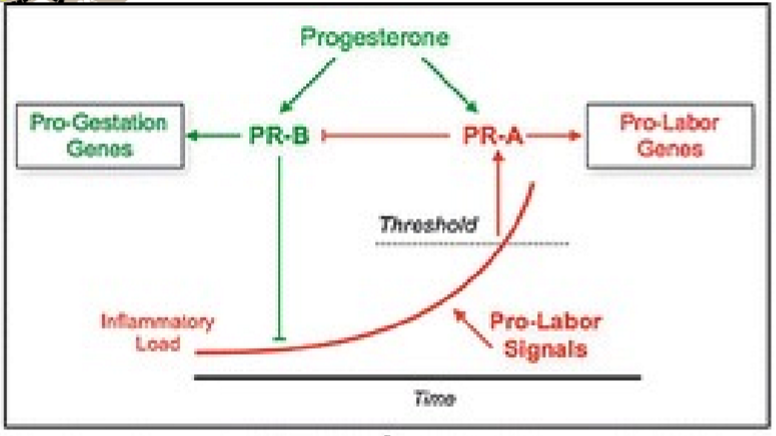
Name some sources of pro-labour signals
Uterine distention (stretch)
Infection
Foetal stress
Abruption
Maternal stress
Senescence (placental aging)
What tissues respond directly to pro-labour signals
Myometrium, decidua, and cervix
What 3 things do tissue-level inflammation & pro-labour signals/genes cause to happen to the cervix, decidua & myometrium

What gets released from the hypothalamus on the side of the foetus at around 40 weeks & follow that pathway down to its pro-labour effects
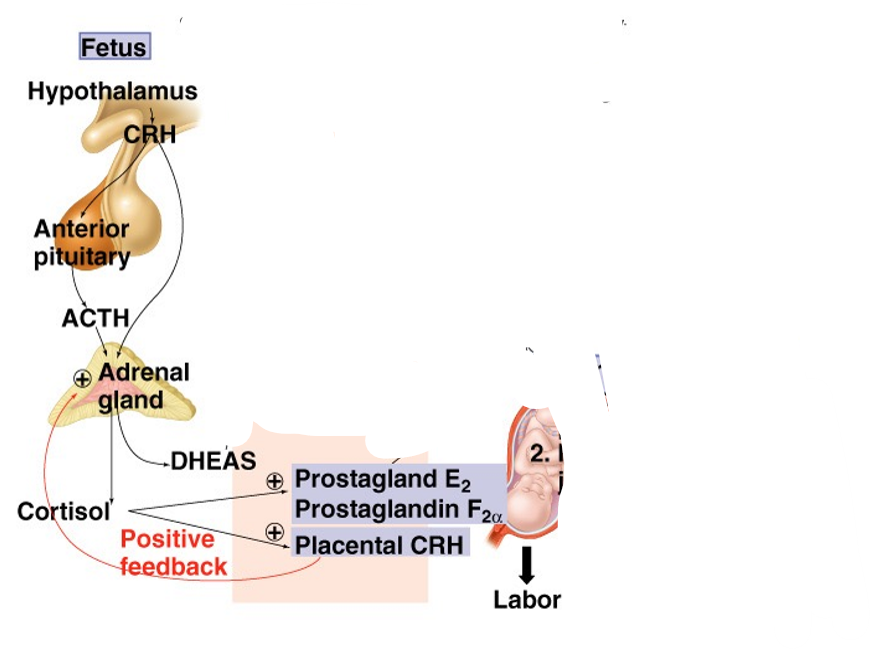
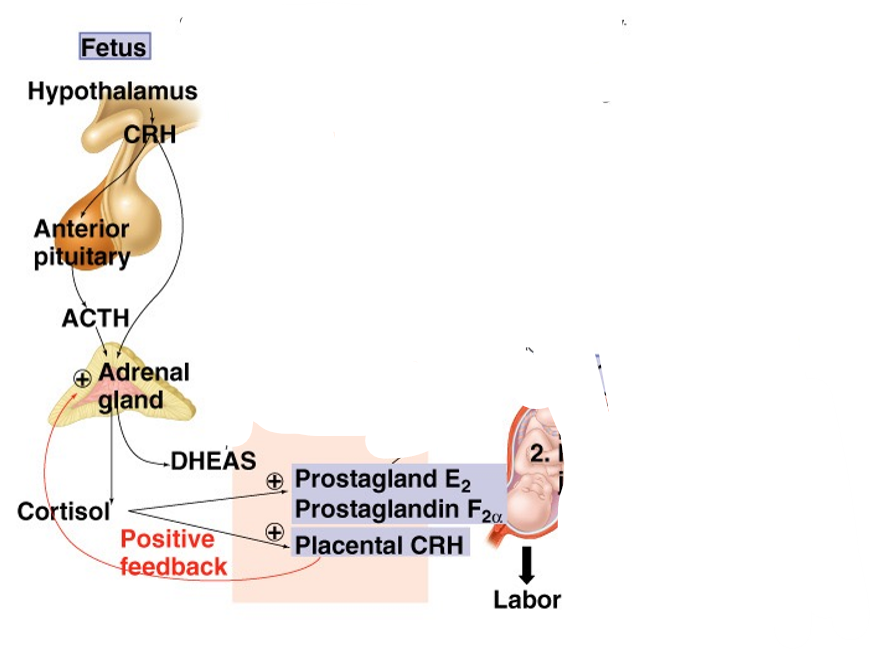
What is the purpose of the cortisol released by the foetus
Cortisol helps the foetus deal with the stress of labour & delivery

What is the result of the prostaglandins being released
Causes the myometrium to contract
DHEAS from the foetus makes its way to the placenta. What does it get converted to there
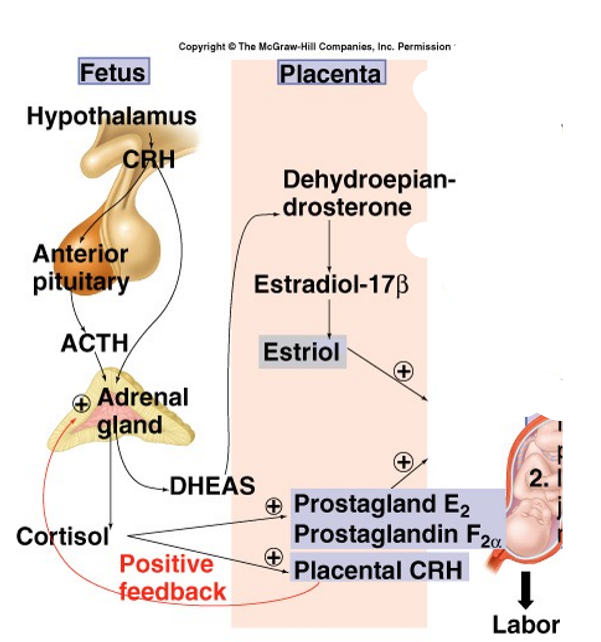
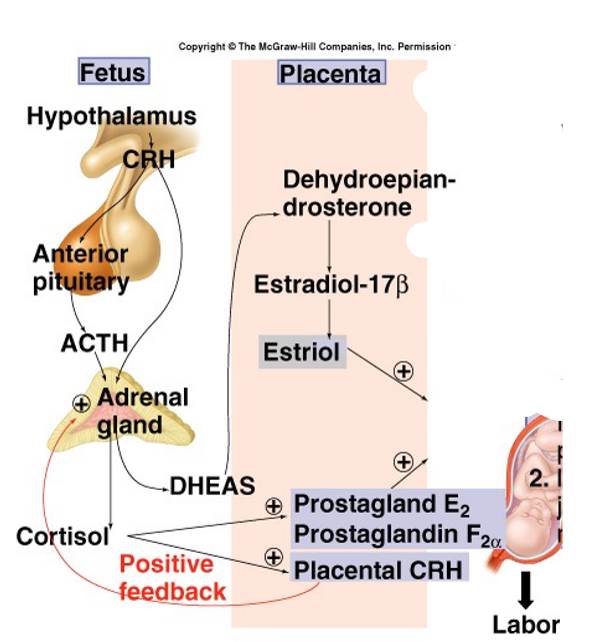
Estriol released from the placenta has what effect
Increases uterine contractility
What is released from the mother’s hypothalamus to contribute to the start of labour
Increased oxytocin produced & huge increase in oxytocin receptors
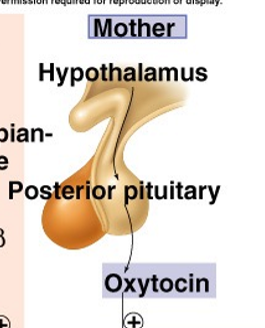
What effect does increased oxytocin have in initiating labour
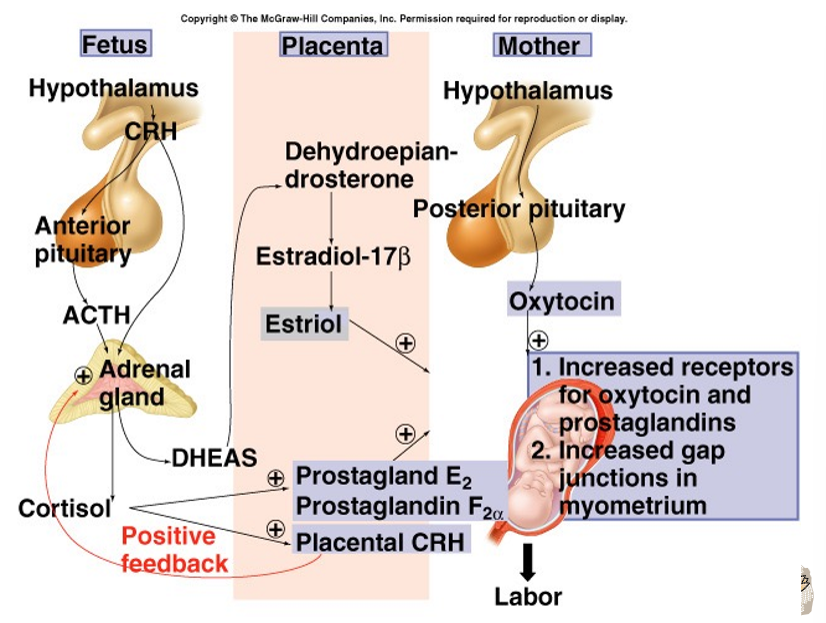
How does the placenta contribute to lactation (what does it produce & what does that do?)
It produces oestrogen & progesterone, both of which promote growth & development of mammary glands & ducts
Also oestrogen stimulates the hypothalamus
Oestrogen stimulates the hypothalamus to do what
Inhibit the prolactin inhibitory hormone (PIH)
What produces prolactin & where does it go
Anterior pituitary gland → Mammary glands
What other endocrine glands promote the normal growth & development of mammary glands & ducts
Pancreas
Adrenal cortex
Thyroid
They don’t cause mammary growth on their own, but must be present for mammary glands and ducts to develop normally.
What hormones do these endocrine hormones produce:
Pancreas
Adrenal cortex
Thyroid
Pancreas → Insulin
Adrenal cortex → Cortisol
Thyroid → Thyroxine
The predominant pathway of lactation is stimulatory/inhibitory
Inhibitory - generally we’re not breastfeeding
True/False: At birth, prolactin begins working because it is upregulated
False - At first it works simply because inhibition is removed
It is then produced more with the sensory input of suckling
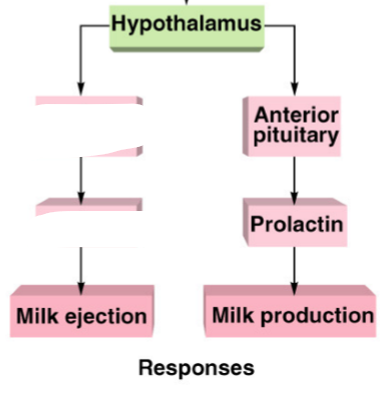
(Anterior = 1st = 1st reflex
Post = behind = 2nd reflex)
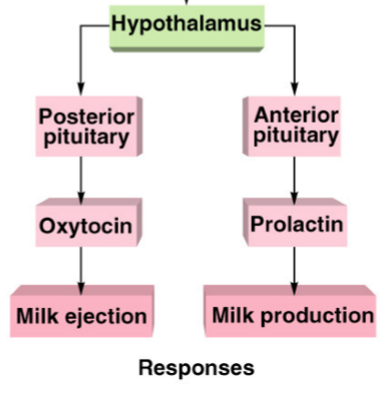
What type of drugs inhibit the milk ejection reflex
Anticholinergic drugs